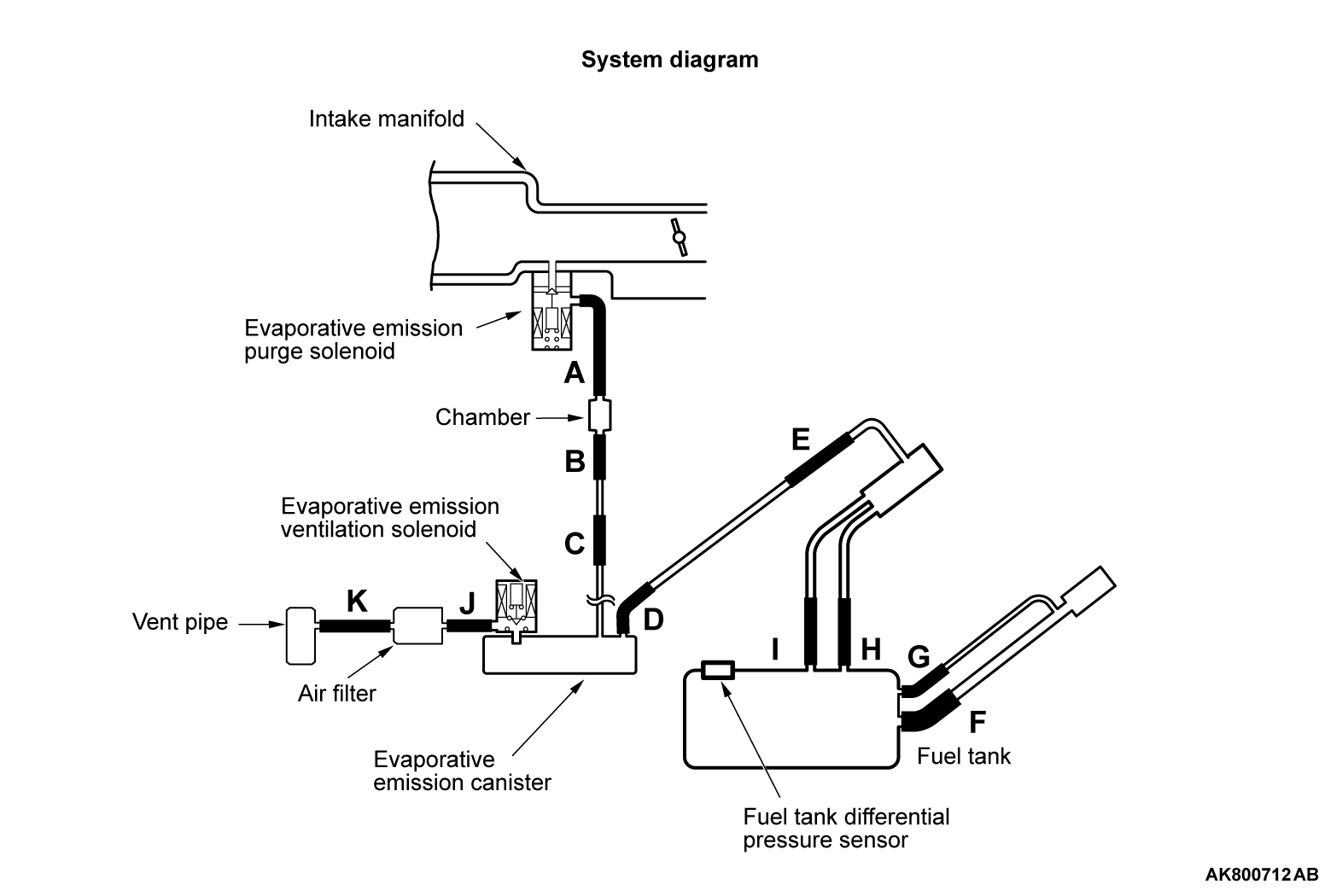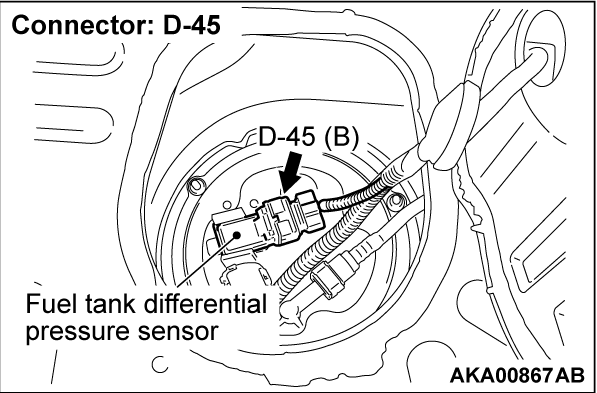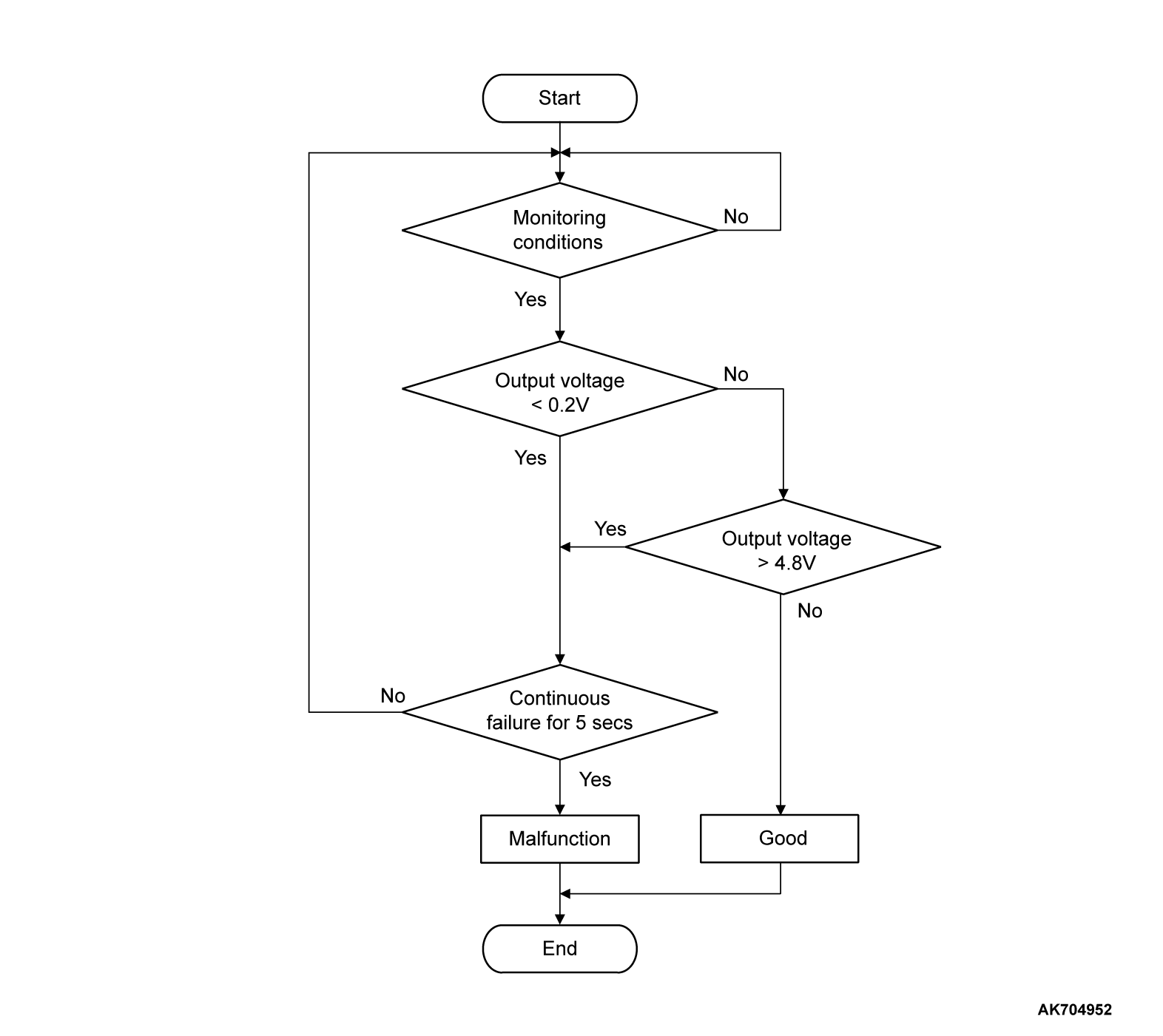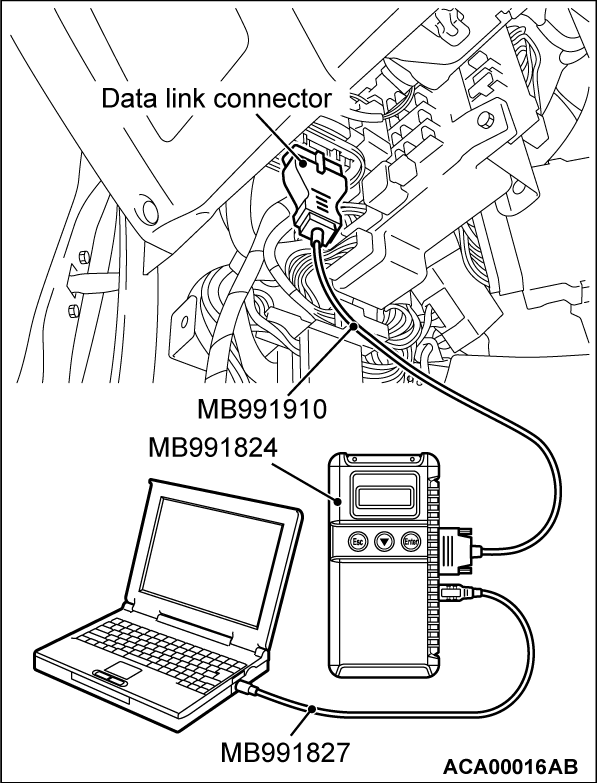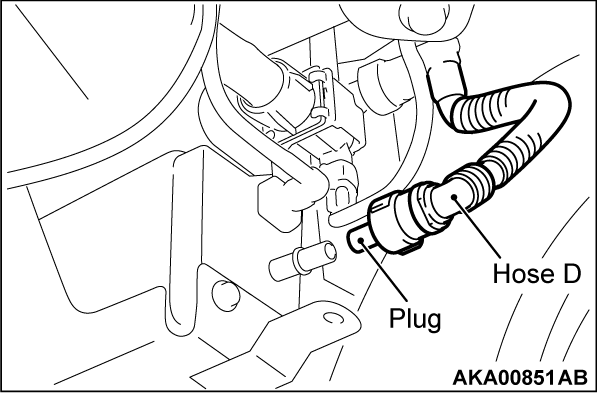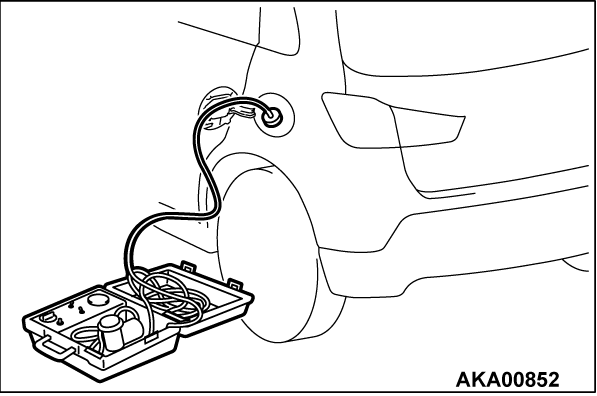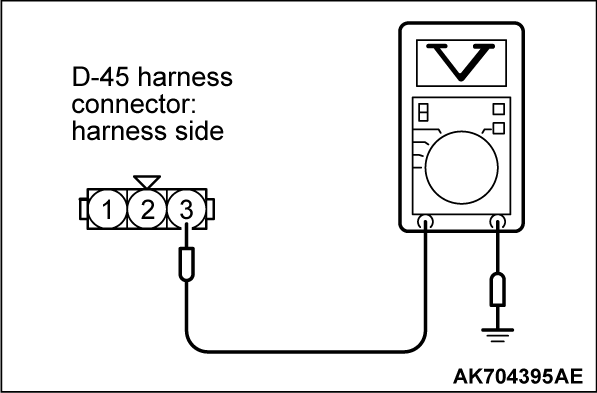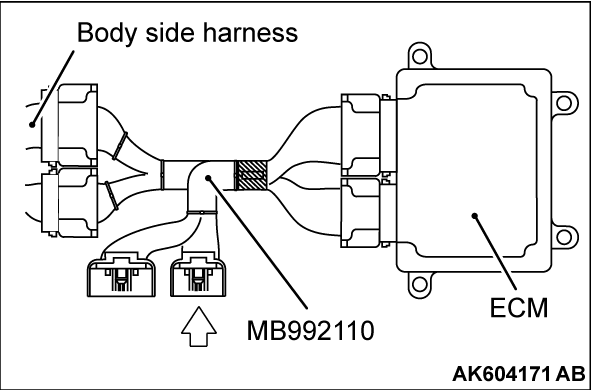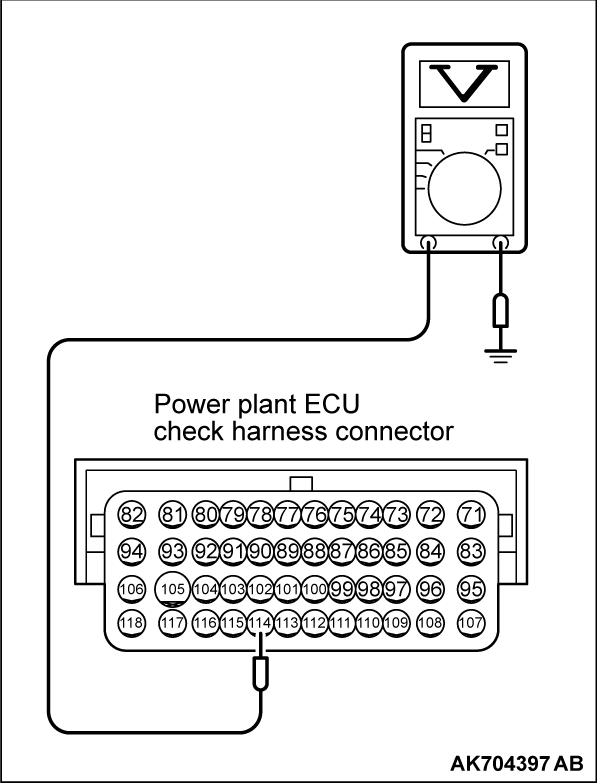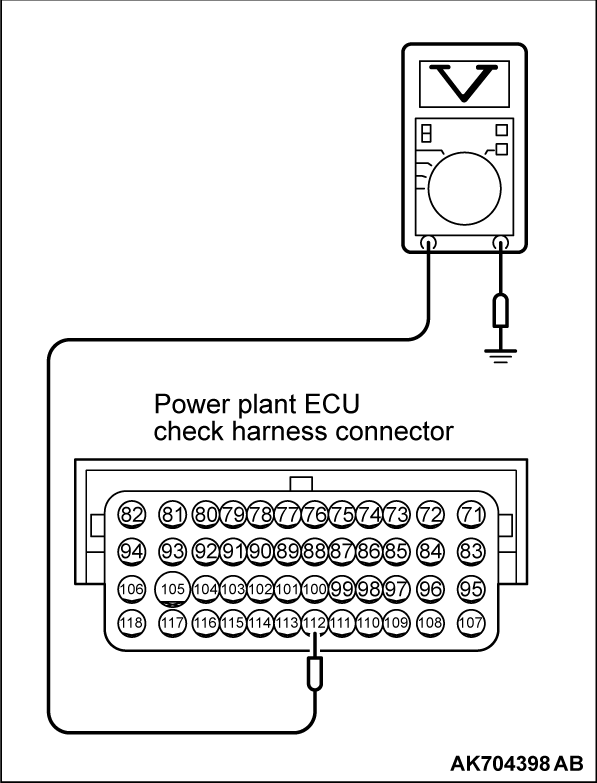DTC P0452: Evaporative Emission Control System Pressure Sensor Low Input
CIRCUIT OPERATION
- The ECM (terminal No. 114) supplies a 5 volts reference signal to the fuel tank differential pressure sensor (terminal No. 3). The fuel tank differential pressure sensor (terminal No. 2) is grounded through the ECM (terminal No. 113).
- The fuel tank differential pressure sensor (terminal No. 1) returns a voltage signal to the ECM (terminal No. 112) that is proportional to the pressure in the fuel tank.
TECHNICAL DESCRIPTION
- The ECM monitors the fuel tank differential pressure sensor output voltage.
- The ECM determines whether the fuel tank differential pressure sensor signal voltage is within normal operating parameters.
DESCRIPTIONS OF MONITOR METHODS
- Fuel tank differential pressure sensor output voltage is out of specified range.
MONITOR EXECUTION
- Continuous
MONITOR EXECUTION CONDITIONS (OTHER MONITOR AND SENSOR)
Other Monitor (There is no temporary DTC set in memory for the item monitored below)
- Evaporative emission purge solenoid monitor
- Evaporative emission ventilation solenoid monitor
- Fuel temperature sensor monitor
- Fuel level sensor monitor
Sensor (The sensors below are determined to be normal)
- Mass airflow sensor
- Engine coolant temperature sensor
- Intake air temperature sensor
- Barometric pressure sensor
- Accelerator pedal position sensor
Check Condition
- More than 2 seconds have passed since the engine starting sequence was completed.
Judgment Criterion
- The fuel tank differential pressure sensor output voltage is less than 0.2 volt for 5 seconds.
FAIL-SAFE AND BACKUP FUNCTION
- None
TROUBLESHOOTING HINTS (THE MOST LIKELY CAUSES FOR THIS CODE TO BE SET ARE:)
- Fuel tank differential pressure sensor failed.
- Open or shorted fuel tank differential pressure sensor circuit or connector damage.
- ECM failed.
DIAGNOSIS
Required Special Tools:
- MB991958: Scan Tool (M.U.T.-III Sub Assembly)
- MB991824: V.C.I.
- MB991827: USB Cable
- MB991910: Main Harness A
- MB992110: Power Plant ECU Check Harness
STEP 1. Using scan tool MB991958, check data list item 52: Fuel Tank Differential Pressure Sensor.
| caution | To prevent damage to scan tool MB991958, always turn the ignition switch to the "LOCK" (OFF) position before connecting or disconnecting scan tool MB991958. |
(1) Connect scan tool MB991958 to the data link connector.
(2) Disconnect hose D from the evaporative emission canister, and plug the hose.
(3) Turn the ignition switch to the "ON" position.
(4) Remove the fuel cap.
(5) Set scan tool MB991958 to the data reading mode for item 52, Fuel Tank Differential Pressure Sensor.
- Output voltage should be between 1,500 and 3,500 millivolts.
(6) Connect the evaporative emission system pressure pump (Miller number 6872A) to the fuel tank filler tube by using fuel tank adapter (MLR-8382) and pressurize the fuel tank.
- The fuel tank pressure reading should increase.
(7) Turn the ignition switch to the "LOCK" (OFF) position.
(8) Remove the evaporative emission system pressure pump (Miller number 6872A) and the fuel tank adapter (MLR-8382), and reinstall the fuel cap.
(9) Connect hose D to the evaporative emission canister.
Is the sensor operating properly?
STEP 2. Measure the sensor supply voltage at fuel tank differential pressure sensor connector D-45 by backprobing.
(1) Do not disconnect the connector D-45.
(2) Turn the ignition switch to the "ON" position.
(3) Measure the voltage between terminal No. 3 and ground by backprobing.
- Voltage should be between 4.9 and 5.1 volts.
(4) Turn the ignition switch to the "LOCK" (OFF) position.
Is the measured voltage between 4.9 and 5.1 volts?
STEP 3. Check harness connector B-27 at ECM for damage.
Is the harness connector in good condition?
STEP 4. Measure the sensor supply voltage at ECM connector B-27 by using power plant ECU check harness special tool MB992110.
(1) Disconnect all ECM connectors. Connect the power plant ECU check harness special tool MB992110 between the separated connectors.
(2) Turn the ignition switch to the "ON" position.
(3) Measure the voltage between terminal No. 114 and ground.
- Voltage should be between 4.9 and 5.1 volts.
(4) Turn the ignition switch to the "LOCK" (OFF) position.
Is the measured voltage between 4.9 and 5.1 volts?
STEP 5. Check harness connector D-45 at fuel tank differential pressure sensor for damage.
Is the harness connector in good condition?
STEP 6. Check for short circuit to ground between fuel tank differential pressure sensor connector D-45 (terminal No. 3) and ECM connector B-27 (terminal No. 114).
| note | Check harness after checking intermediate connector C-28. If intermediate connector is damaged, repair or replace it. Refer to GROUP 00E, Harness Connector Inspection  . Then go to Step 13. . Then go to Step 13. |
Is the harness wire in good condition?
STEP 7. Check harness connector D-45 at fuel tank differential pressure sensor for damage.
Is the harness connector in good condition?
 Check harness connector C-28 at intermediate connector for damage, and repair or replace as required. Refer to GROUP 00E, Harness Connector Inspection
Check harness connector C-28 at intermediate connector for damage, and repair or replace as required. Refer to GROUP 00E, Harness Connector Inspection  . If intermediate connector is in good condition, repair harness wire between fuel tank differential pressure sensor connector D-45 (terminal No. 3) and ECM connector B-27 (terminal No. 114) because of open circuit. Then go to Step 13.
. If intermediate connector is in good condition, repair harness wire between fuel tank differential pressure sensor connector D-45 (terminal No. 3) and ECM connector B-27 (terminal No. 114) because of open circuit. Then go to Step 13.
STEP 8. Check harness connector B-27 at ECM for damage.
Is the harness connector in good condition?
STEP 9. Measure the sensor output voltage at ECM connector B-27 by using power plant ECU check harness special tool MB992110.
(1) Disconnect all ECM connectors. Connect the power plant ECU check harness special tool MB992110 between the separated connectors.
(2) Turn the ignition switch to the "ON" position.
(3) Remove the fuel cap.
(4) Measure the voltage between terminal No. 112 and ground.
- Voltage should be between 1.5 and 3.5 volts.
(5) Turn the ignition switch to the "LOCK" (OFF) position.
Is the measured voltage normal?
STEP 10. Check harness connector D-45 at fuel tank differential pressure sensor for damage.
Is the harness connector in good condition?
STEP 11. Check for open circuit and short circuit to ground between fuel tank differential pressure sensor connector D-45 (terminal No. 1) and ECM connector B-27 (terminal No. 112).
| note | Check harness after checking intermediate connector C-28. If intermediate connector is damaged, repair or replace it. Refer to GROUP 00E, Harness Connector Inspection  . Then go to Step 13. . Then go to Step 13. |
Is the harness wire in good condition?
STEP 12. Using scan tool MB991958, check data list item 52: Fuel Tank Differential Pressure Sensor.
(1) Disconnect hose D from the evaporative emission canister, and plug the hose.
(2) Turn the ignition switch to the "ON" position.
(3) Remove the fuel cap.
(4) Set scan tool MB991958 to the data reading mode for item 52, Fuel Tank Differential Pressure Sensor.
- Output voltage should be between 1,500 and 3,500 millivolts.
(5) Connect the evaporative emission system pressure pump (Miller number 6872A) to the fuel tank filler tube by using fuel tank adapter (MLR-8382) and pressurize the fuel tank.
- The fuel tank pressure reading should increase.
(6) Turn the ignition switch to the "LOCK" (OFF) position.
(7) Remove the evaporative emission system pressure pump (Miller number 6872A) and the fuel tank adapter (MLR-8382), and reinstall the fuel cap.
(8) Connect hose D to the evaporative emission canister.
Is the sensor operating properly?
![[Previous]](../../../buttons/fprev.png)
![[Next]](../../../buttons/fnext.png)
